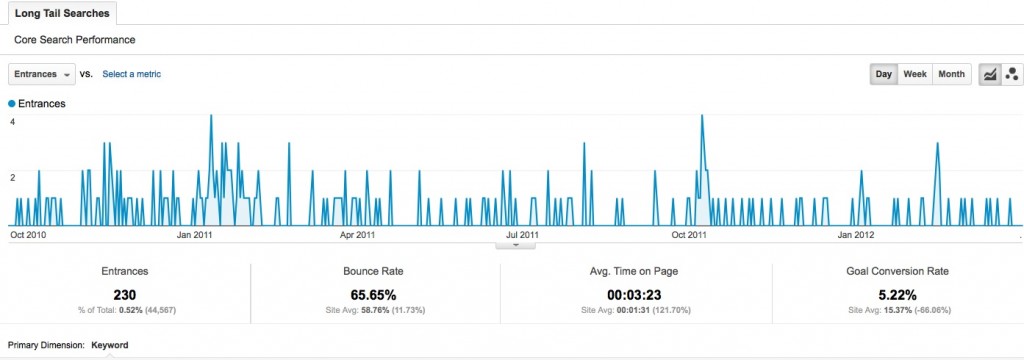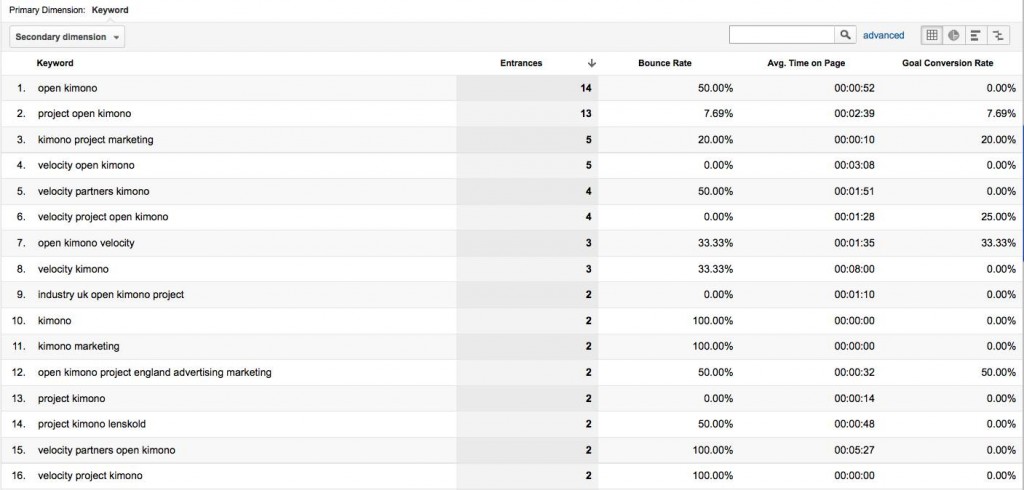Marketers rarely let a lack of knowledge get in the way of a strongly held opinion.
I’m still counting the years lost listening to people trade “gut feelings”, “hunches” and “inklings” in meetings that go precisely nowhere.
I had a choice: slowly atrophy at the end of a meeting table with a face like Edvard Munch’s most famous muse, or learn some analytics, provide some direction and get home in time to find out what Don Draper’s been doing.
Content Marketing Campaign Naming
And here’s just one example of why it’s worth it. Last week I walked into the middle of an argument on the name of a content campaign.
In the red corner we had:
The Brand Guys
They wanted a campaign name that stood out, made a statement and put two strong fingers up to the competition. With some justification, they said there’s no point in doing it if it’s not going to be different.
In the blue corner we had:
The Inbound Team
They wanted a campaign name that resonated, used the language of the customer and fought for search traffic. With some justification, they said there’s no point in doing it if it’s not going to be found.
A classic impasse: hunch intolerance leading to long-term inactivity and entrenched intransigence.
So I asked for an hour to prove that you can, in fact, do both. And here’s what we came up with to break the deadlock.
Project Reopened Robe
Some of you may remember Project Open Robe – our warts and all look at the results of the B2B Marketing Manifesto campaign. It was also a campaign within a campaign, designed to generate visits and conversions of its own, where we’d faced this problem down before.
As you’ve no doubt noticed, Project Open Robe is not a name laden with B2B search anchor text. So why go down this route? Because we believed:
- An evocative project deserved an evocative name
- An attention grabbing name would suit social promotion
- Long-tail search optimisation success would still be possible
- A few bewildered fans of real-life robes would survive the shock
So could we prove the case for evocative naming and descriptive campaign optimization? Let’s see what we came up with:
Overall Success
The campaign started about 18 months ago and, although we wrapped it up about six months ago, it continues to drive traffic today. Here’s what we’ve done so far (and do click the graphs to make them bigger if you want to get into the detail).
Entrances
The campaign (within a campaign) has attracted over 2000 entrances. That’s nearly 5% of all our inbound traffic in the last 18 months. I like that.
Sources – Social
And did our decision to go with an evocative name pay off? Our social campaign (mostly social sharing and guest blogs) delivered almost half our entrances. Sounds like the name helped inspire the clicks.

Sources – Search Long-Tail
But did we manage to squeeze out long-tail searches from our core B2B marketing phrases? The answer is yes. We’ve had 230 entrances from nearly 150 search queries. And it’s still coming now.
Sources – Robe searches
And how much did we annoy people coming for a peek down a real ‘Open Robe’? Strangely the metrics stack up reasonably well because most of the traffic is from people looking for our project.
We built enough brand awareness (no doubt helped by an evocative name) that people could remember and find us. Bonus!
Which Opinion Wins?
Both or neither. The impasse breaking advice (complete with recommendations) helped get the project back on track by showing the project’s goals could be broadened rather than narrowed because:
1. Stand out names don’t rule out search optimization
2. Writing for people and labeling for search engines is realistic
3. Introducing social channels alters a search only focus
4. Brand search, in some cases, is a legitimate goal
5. Measurement periods can be years rather than months
The key point: a good campaign should be different and optimized for search (and all other possible channels). The analytics show a good campaign can satisfy the metrics of more than one opinion.
It’s quicker and more accurate to investigate proactively than sit passively and debate them.
If you missed project Open Robe the first time then here’s a refresher:
Project Open Robe Part 1 – the one where we commit ourselves in public (Planning)
Project Open Robe Part 2 – the one where it all kicks off (Thinking)
Project Open Robe Part 3 – the one where confidence starts to rise (First results)
Project Open Robe Part 4 – the one where the trick shots start (Cross-promotion)
Project Open Robe Part 5 – the one where we share the first month’s results (Reviewing)
Project Open Robe Part 6 – the one where we toughen up (Soul Searching)
Project Open Robe Part 7 – the one where we find the world’s best marketers (Segmenting)
Project Open Robe Part 8 – the one where we show that design isn’t everything (Style v Substance)
Project Open Robe Part 9 – the one where lead nurturing proves its worth (Marketo)
Project Open Robe Part 10 – the one where the form fights back (Form v No Form)
Project Open Robe Part 11 – the one about autoDMs in Twitter
Project Open Robe Part 12 – the one about re-purposing and atomising your content
Project Open Robe Part 13 – the one with an early peek at the outcomes
Project Open Robe Part 14 – the one where it ends (before it starts again)

Enjoyed this article?
Take part in the discussion











Comments
Central London August 18th, 2021
I think that each person should watch what and how he throws out. Now there is a lot of garbage all over the planet, and it is only growing. If we also consider that it decomposes very slowly, we can soon get “plastic earth.” This prospect does not make me happy, as, I think, and you! To do this, you need to learn how to properly and efficiently dispose of garbage.